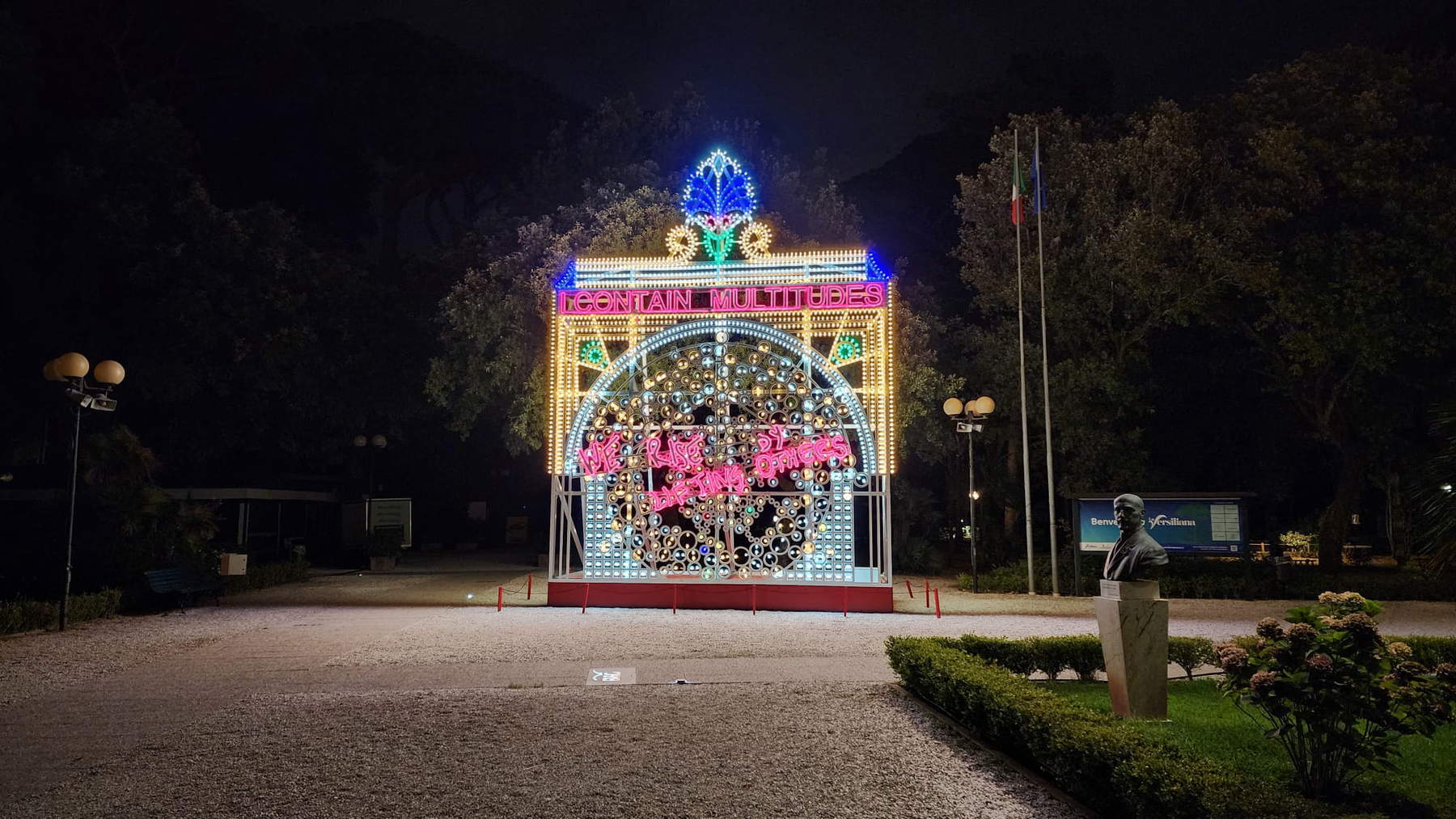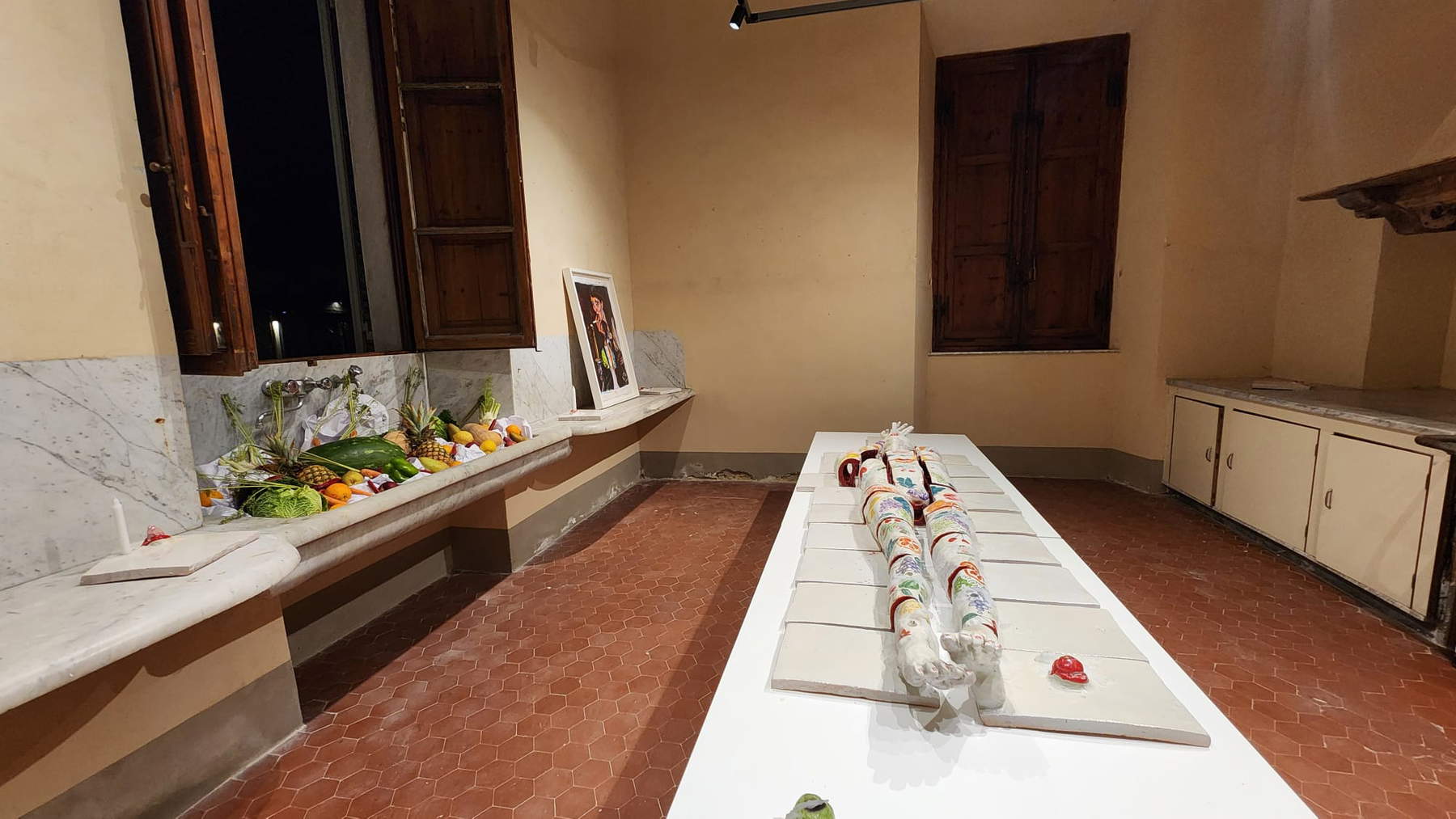That Versilia is no longer what it once was should be clear to everyone by now. Those who think otherwise should be suggested a ride along the waterfront between Carrara and Viareggio on any summer day (except Saturdays, when there is still a minimum of movement). Without going back too many years, this strip of asphalt, this line that runs straight as a rail from the border with Liguria to the Darsena, until not so long ago looked like the main street of Disneyland. The side streets were like those Tondelli imagined for his Via Emilia: minor tributaries all carrying the same message of restlessness. Lights, glares, music, traffic jams. Today, however, you struggle to find a bar open after eleven o’clock at night. It is as if Versilia has plunged into a perpetual September. It may be that the discos have almost all ended up in ruins and there is little left open, it may be the collapse of real wages and purchasing power, it may be the change in habits, it may be that in our society hyperliquid and hyperfragmented society, even the way of having fun has crumbled, but after you wander around all night in the midst of the desolation it is normal to wonder where everyone has gone. Everyone: the rich, the poor, the young, the old, the natives, the vacationers. On the waterfront at night there is no one left. Can you imagine them then locked in their homes as in winter, air conditioning on to forget about climate change, Netflix to forget about real life, all recoiling from the scraps of other people’s lives they see on a screen.
It is Sunday evening, July 6, the waterfront is deserted, and you find parking in front of the entrance to the Versiliana, in Marina di Pietrasanta, to go see what is supposed to be the exhibition of the summer. Entitled I Contain Multitudes, it runs from July 4 to August 31, so it covers the entire highlight of the season in Versilia. The centerpiece is Marinella Senatore’s eponymous installation in the villa’s garden, complete with a special curator (Arturo Galansino). And about this millionth, trite, boring, colorful sign of hers that mimics the illuminations of Salento, there is not much to say: the usual, pale imitations of the original, backed by the usual, pale rhetoric about coexistence among people, about choral contexts, about social cohesion, about “tradition that can become a device to activate processes in the here and now” (so in the interview with Galansino published in the sheet distributed at the exhibition, whatever that means). An installation that, according to Marinella Senatore, should convey "celebration and empowerment, illuminating everyone’s potential.“ It may be: Marinella Senatore, it will be said, is an artist who expresses herself with corporate motivational phrasing, however, maybe she is right and the audience really feels engaged by her illuminations. However, the fact is that probably no one seems to be interested in having the potential illuminated, because it is ten o’clock on Sunday night, two days after the opening, there is no one at the Versiliana and theonly possible coexistence is with the room keepers who are guarding the rest of the exhibition, an outline of ”young international artists,“ curated by Edoardo Monti and Sofia Simakova (the lot also includes Russian Alexandra Vertinskaya, born in 1969: evidently the two curators must have a rather dilated concept of ”youth“) who were entrusted with the selection of newcomers to be exhibited alongside Senatore. The bad news is that an exhibition is not there, if by ”exhibition" one means an organic and coherent selection of works that are supposed to compete to bring out a thought, support a position, prove a thesis. Rather, there is a collection of more or less interesting objects (and, incidentally, one wonders what the curators are for, given that to cram things inside a dozen or so rooms requires no preparation, no intellectual prerequisites: one simply needs to know a few artists and have the minimum union of taste). The good news is, however, that the exhibition is of supreme utility. If you have a few thousand euros to spend and want to furnish your house.



The mayor of Pietrasanta cannot be accused of inconsistency when he says that the exhibition “is a tangible sign of the direction in which we want to take the Versiliana and our city: Pietrasanta has always been a laboratory of creativity, and this artistic project of such a high level reinforces its contemporary vocation.” Now, on the one hand you have the Versilia in the summer, which has always been a big amusement park, perhaps a bit decadent today compared to yesteryear, but still that is its vocation, and the Versiliana has never ceased its task as a good bourgeois salon of the coastline, as a playground of the socialite conventicles who move en bloc between Forte dei Marmi and Pietrasanta in the summer to bivouac for a couple of months and then go back to where they came from to start dealing with important things again. On the other hand, on the other hand, you have a heterogeneous patchwork of works that, indeed, if it is true that today the bulk of contemporary art is, Luca Rossi would say, a kind of evolution of IKEA, in the end compose a big bazaar with lots of colorful ideas for the seaside villa of those who frequent Versilia. And since, except for Saturday nights, there is not much to do on the coast at night anymore, then Pietrasanta wants to make the home confinement of its wealthy vacationers comfortable with a top-notch project if your purpose is to hang something over a sofa or decorate your backyard.
Marinella Senatore is perfect, rightly so, for the garden: her luminaria is ideal for flanking a beautiful berceau, or to brighten up the table where you usually have your diners scrambling, so much so that for the inauguration the organizers were kind enough to set the ritual dinner table right under Senatore’s work to offer visitors intending to purchase a nice set photo as well. One enters the Versiliana and finds Cosimo Vella’s ceramic tractors, which may be a bit small for an outdoor setting, but are the correct size to decorate your jardin d’hiver recreating a beautiful georgic setting, perhaps along with Jacopo Naccarato’s hares that you find a little further on. Giulia Messina, who, the printed guide informs us, “develops her practice from an intimate connection between body, food, rituality and vulnerability,” with her ceramic body sushi looks great as a centerpiece, a bit like the triumph Gio Ponti had made by Manifattura di Doccia for the Foreign Ministry: so unless you plan to host a delegation of European commissioners in your home, the work you see at the Versiliana will do just fine. For the rest, there is nothing missing: for the children’s room, Mathilde Alboy’s toys (though a little creepy) or Giovanni Stefano Rossi’s talking cricket (perhaps remove the sacred heart of Christ facing him in dialogue); for the hall, Alisa Yoffe’s elegant cypress silhouettes ; for the porch, Apollinaria Broche’s bronze constellations. There are even Namsal Siedlecki’s vases that present themselves for what they are: vases, indeed. And then there is Vladimir Kartashov, one of the rare artists who would have something to say in this exhibition, who has been put in to decorate a four-poster bed to suggest furnishing possibilities for your alcove.



Interesting to note that, again according to the mayor, this exhibition fits “as a strategic piece” in support of Pietrasanta’s candidacy as Italian Capital of Contemporary Art 2027. We do not know if Pietrasanta will win the title (the odds are high: we are the country where L’anniversario wins the Premio Strega, so Pietrasanta has all the potential to become the capital of contemporary art), but it certainly has the qualifications to become not only the capital but also the Maison du Monde of contemporary art. Otherwise, one does not understand what “artistic project” holds up this exhibition. It is unclear what “intergenerational dialogue,” to use the organization’s expression, there is between the works of Marinella Senatore and those of the artists in the group show. “Artists linked to the territory,” we are told, even though the two curators merely brought in artists from their respective stables. Besides, “territory” is also a slightly expanded concept here, since among the artists chosen there are also those who probably come to the territory just to vacation there. With Marinella Senatore to “broaden the references for the city’s candidacy.”
In essence, Pietrasanta is probing the Paris Saint-Germain model of a few years ago: putting together bombastic names (the Senatore, Galansino, Edoardo Monti, the scientific committee for the candidacy) in order to impress opponents and win cups. For the cultural project, it will wait. Unless one considers it an operation of supreme cultural value to exhibit, without the slightest construction, the works of a dozen artists inside the halls of the main and busiest cultural space of Marina di Pietrasanta, and to consider having achieved the goal for having “fostered an intergenerational dialogue between theintervention of Marinella Senatore and that of the young artists” (being careful, however, to distinguish between the two parts of the exhibition, lest Senatore should pass for the superstar of the show, complete with personal curator and strong with a page and a half all to herself out of the four that make up the exhibition sheet, with the other eleven sharing the fourth: because openness is fine, sharing is fine, and dialogue is fine, but you have to make it clear to the audience who theheadliner is, even if, for the vast majority of those who will enter the Versiliana this summer, “Senator” is just the title of someone who is entitled to a seat in the Palazzo Madama). If this is enough, then yes, I Contain Multitudes is a high-level cultural project. Good for enthusiasts and for those who have to furnish their villa. Then if you have an apartment, you will be content to take home one of the 33 cl water bottles with the exhibition logo, kindly made available to visitors. With the same shapes as the Seven-Up bottles from the 1990s: given that, says a Versilian like Fabio Genovesi, nostalgia is the main industry of this land, then evidently the exhibition also wanted to align itself.
Warning: the translation into English of the original Italian article was created using automatic tools. We undertake to review all articles, but we do not guarantee the total absence of inaccuracies in the translation due to the program. You can find the original by clicking on the ITA button. If you find any mistake,please contact us.